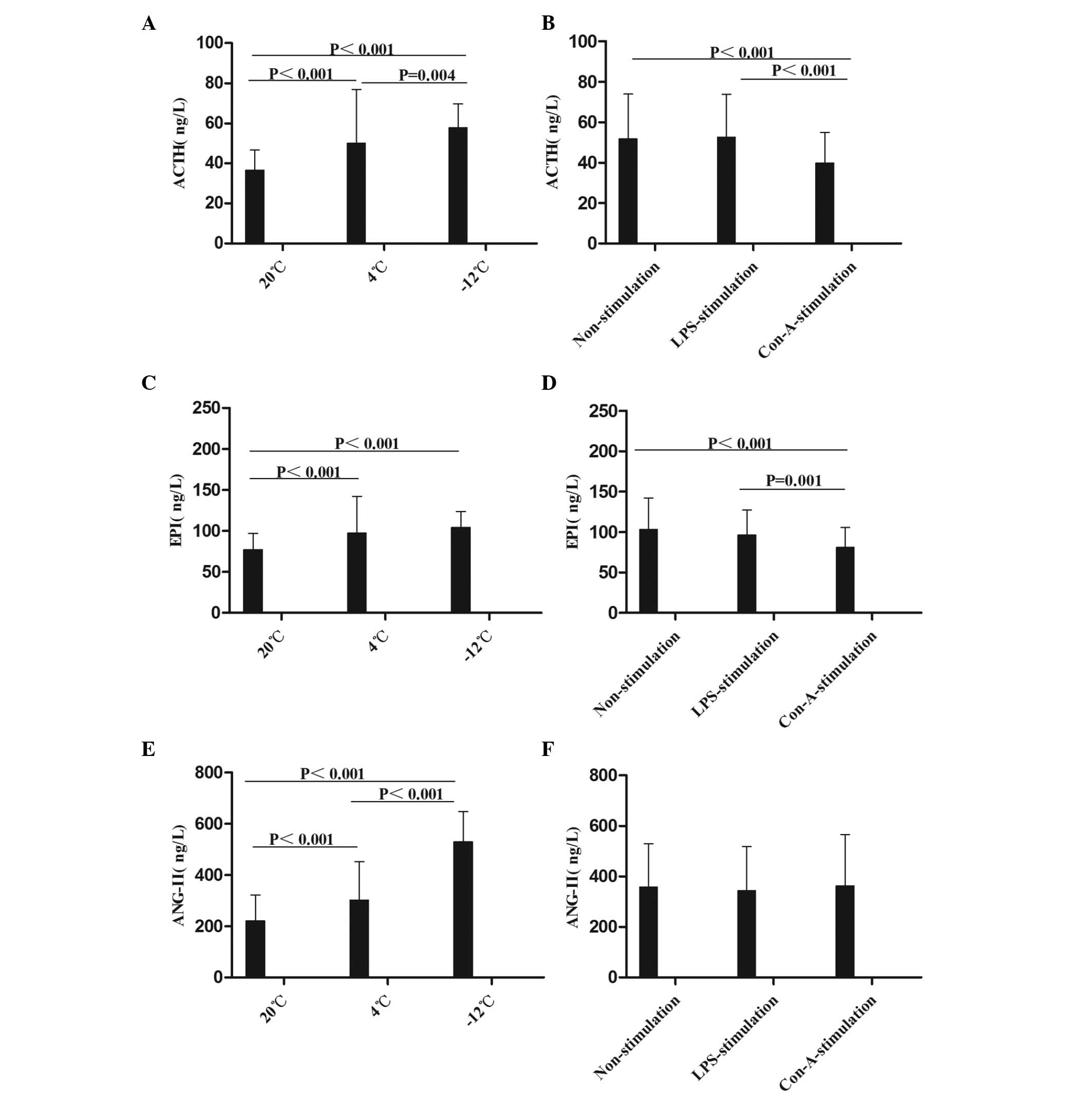|
1
|
Smith AP: Effects of upper respiratory
tract illnesses and stress on alertness and reaction time.
Psychoneuroendocrinology. 38:2003–2009. 2013. View Article : Google Scholar : PubMed/NCBI
|
|
2
|
Temajo NO and Howard N: The mosaic of
environment involvement in autoimmunity: the abrogation of viral
latency by stress, a non-infectious environmental agent, is an
intrinsic prerequisite prelude before viruses can rank as
infectious environmental agents that trigger autoimmune diseases.
Autoimmun Rev. 13:635–640. 2014. View Article : Google Scholar : PubMed/NCBI
|
|
3
|
Baccan GC, Oliveira RD and Mantovani B:
Stress and immunological phagocytosis: possible nongenomic action
of corticosterone. Life Sci. 75:1357–1368. 2004. View Article : Google Scholar : PubMed/NCBI
|
|
4
|
Branger J, Leemans JC, Florquin S, Weijer
S, Speelman P and Van Der Poll T: Toll-like receptor 4 plays a
protective role in pulmonary tuberculosis in mice. Int Immunol.
16:509–516. 2004. View Article : Google Scholar : PubMed/NCBI
|
|
5
|
Zieziulewicz TJ, Mondal TK, Gao D and
Lawrence DA: Stress-induced effects, which inhibit host defenses,
alter leukocyte trafficking. Cell Stress Chaperones. 18:279–291.
2013. View Article : Google Scholar : PubMed/NCBI
|
|
6
|
Kelley KW, Greenfield RE, Evermann JF,
Parish SM and Perryman LE: Delayed-type hypersensitivity, contact
sensitivity, and phytohemagglutinin skin-test responses of heat-
and cold-stressed calves. Am J Vet Res. 43:775–779. 1982.PubMed/NCBI
|
|
7
|
Liu YL, Bi H, Chi SM, Fan R, Wang YM, Ma
XL, Chen YM, Luo WJ, Pei JM and Chen JY: The effect of compound
nutrients on stress-induced changes in serum IL-2, IL-6 and
TNF-alpha levels in rats. Cytokine. 37:14–21. 2007. View Article : Google Scholar : PubMed/NCBI
|
|
8
|
Ablimit A, Kühnel H, Strasser A and Upur
H: Abnormal Savda syndrome: long-term consequences of emotional and
physical stress on endocrine and immune activities in an animal
model. Chin J Integr Med. 19:603–609. 2013. View Article : Google Scholar : PubMed/NCBI
|
|
9
|
Belay T and Woart A: Cold-induced stress
increases the intensity of Chlamydia genital infection in mice. J
Microbiol Immunol Infect. 46:330–337. 2013. View Article : Google Scholar : PubMed/NCBI
|
|
10
|
Vernikos J, Dallman MF, Bonner C, Katzen A
and Shinsako J: Pituitary-adrenal function in rats chronically
exposed to cold. Endocrinology. 110:413–420. 1982. View Article : Google Scholar : PubMed/NCBI
|
|
11
|
Yang G, Xi ZX, Wan Y, Wang H and Bi G:
Changes in circulating and tissue angiotensin II during acute and
chronic stress. Biol Signals. 2:166–172. 1993. View Article : Google Scholar : PubMed/NCBI
|
|
12
|
Israel A, Zavala LE, Cierco M, Gutierrez A
and Garrido Mdel R: Effect of AT(1) angiotensin II receptor
antagonists on the sympathetic response to a cold pressor test in
healthy volunteers. Am J Ther. 14:183–188. 2007. View Article : Google Scholar : PubMed/NCBI
|
|
13
|
Shu J, Stevenson JR and Zhou X: Modulation
of cellular immune responses by cold water swim stress in the rat.
Dev Comp Immunol. 17:357–371. 1993. View Article : Google Scholar : PubMed/NCBI
|
|
14
|
Aviles H and Monroy FP: Immunomodulatory
effects of cold stress on mice infected intraperitoneally with a
50% lethal dose of Toxoplasma gondii. Neuroimmunomodulation.
9:6–12. 2001. View Article : Google Scholar : PubMed/NCBI
|
|
15
|
Goldstein DS and Kopin IJ:
Adrenomedullary, adrenocortical, and sympathoneural responses to
stressors: a meta-analysis. Endocr Regul. 42:111–119.
2008.PubMed/NCBI
|
|
16
|
Brod SA and Hood ZM: Ingested (oral) ACTH
inhibits EAE. J Neuroimmunol. 232:131–135. 2011. View Article : Google Scholar : PubMed/NCBI
|
|
17
|
Barhoumi T, Kasal DA, Li MW, Shbat L,
Laurant P, Neves MF, Paradis P and Schiffrin EL: T regulatory
lymphocytes prevent angiotensin II-induced hypertension and
vascular injury. Hypertension. 57:469–476. 2011. View Article : Google Scholar : PubMed/NCBI
|
|
18
|
Dabbagh K, Dahl ME, Stepick-Biek P and
Lewis DB: Toll-like receptor 4 is required for optimal development
of Th2 immune responses: role of dendritic cells. J Immunol.
168:4524–4530. 2002. View Article : Google Scholar : PubMed/NCBI
|
|
19
|
Hayashi EA, Akira S and Nobrega A: Role of
TLR in B cell development: signaling through TLR4 promotes B cell
maturation and is inhibited by TLR2. J Immunol. 174:6639–6647.
2005. View Article : Google Scholar : PubMed/NCBI
|
|
20
|
Du Q, Min S, Chen LY, Ma YD, Guo XL, Wang
Z and Wang ZG: Major stress hormones suppress the response of
macrophages through down-regulation of TLR2 and TLR4. J Surg Res.
173:354–361. 2012. View Article : Google Scholar : PubMed/NCBI
|
|
21
|
Johnson EW, Hughes TK Jr and Smith EM:
ACTH enhancement of T-lymphocyte cytotoxic responses. Cell Mol
Neurobiol. 25:743–757. 2005. View Article : Google Scholar : PubMed/NCBI
|
|
22
|
Smith EM, Cadet P, Stefano GB, Opp MR and
Hughes TK Jr: IL-10 as a mediator in the HPA axis and brain. J
Neuroimmunol. 100:140–148. 1999. View Article : Google Scholar : PubMed/NCBI
|
|
23
|
Elenkov IJ, Kvetnansky R, Hashiramoto A,
Bakalov VK, Link AA, Zachman K, Crane M, Jezova D, Rovensky J,
Dimitrov MA, Gold PW, Bonini S, Fleisher T, Chrousos GP and Wilder
RL: Low-versus high-baseline epinephrine output shapes opposite
innate cytokine profiles: presence of Lewis- and Fischer-like
neurohormonal immune phenotypes in humans? J Immunol.
181:1737–1745. 2008. View Article : Google Scholar : PubMed/NCBI
|
|
24
|
Kim JM and Rudensky A: The role of the
transcription factor Foxp3 in the development of regulatory T
cells. Immunol Rev. 212:86–98. 2006. View Article : Google Scholar : PubMed/NCBI
|
|
25
|
Platten M, Youssef S, Hur EM, Ho PP, Han
MH, Lanz TV, Phillips LK, Goldstein MJ, Bhat R, Raine CS, Sobel RA
and Steinman L: Blocking angiotensin-converting enzyme induces
potent regulatory T cells and modulates TH1- and TH17-mediated
autoimmunity. Proc Natl Acad Sci USA. 106:14948–14953. 2009.
View Article : Google Scholar : PubMed/NCBI
|
















